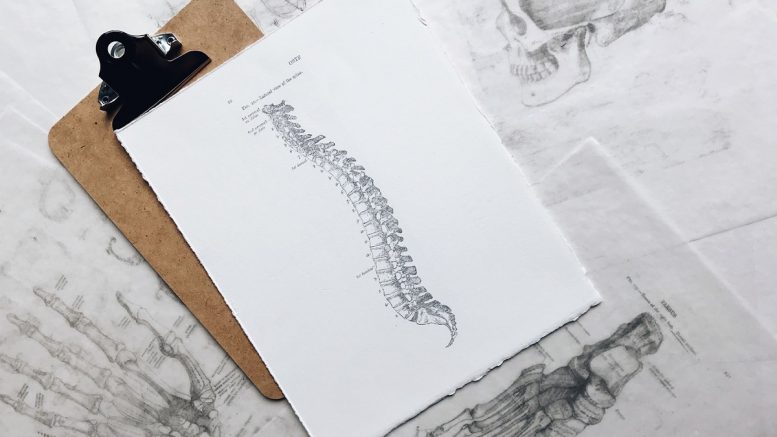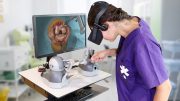What comes to your mind when ‘spinal surgery’ is mentioned? Is it an operation room filled with big operations tools? You are not alone because spinal surgeries were mostly characterized by long recovery periods, large incisions, and painful rehab.
The good news is that definition has changed with the introduction of new procedures such as microdiscectomy. The process is also known by other terms such as microdecompression or microdiskectomy. The procedure is minimally invasive and performed on patients with a herniated lumbar disc. The surgeon removes portions of the herniated disks and relieves pressure on the spinal nerve column.
When to go for this procedure
- Tests such as MRI that indicate the presence of a herniated disk.
- If one has leg pain that has been persistent for the last six weeks.
- When other treatments such as physical therapy and oral steroids are not helping in any way.
- When the patient is experiencing sciatica (leg pain) rather than lower back pain.
What is the success rate?
Recent research from the Spine Institute of San Diego shows that the procedure is up to 95 percent effective when it comes to the elimination of sciatica pain as a result of disc herniation. The compression of the nerve is the main cause of sciatica pain. The compression occurs when one has a herniated disk.
The damaged tissue tends to push into the spinal column while the hernia develops. The nerves become stressed and pain signals are sent to the brain. However, the brain interprets the pain to be coming from the legs. Such pains will go away on their own within a few weeks. However, if the sciatica pain lasts for more than 12 weeks, then a microdiscectomy will be a good solution.
The procedure
The main aim of this surgery is to remove the disc that is causing pressure on the nerves. There are main types of procedures that doctors use when they are performing a microdiscectomy:
Tubular
The surgeon will insert a small tube through a small incision. The tube will then be gently pushed through the back muscles until it reaches the spine. A series of expanding tubes will then be inserted one around the other. The tubes dilate or open up the area where the surgery will be performed. The surgeon will then use specialized equipment to remove the affected disks.
Mini-open
The procedure uses the same approach as open discectomy. The surgeon will use specialized equipment to view the affected areas through small incisions.
Endoscopic
The doctor will insert a small camera and get a view of the affected areas. The endoscope will be inserted through a tube and the doctor will then remove the affected discs with miniaturized instruments.
Microdiscectomy is usually done under general anesthesia. It thus means that the patient will be unconscious during the process and feel nothing until it is over. The patient will be required to sleep facing downwards.
Generally, the following steps will be followed:
- The doctor will do an incision of about 1 or one and a half inches over the affected disk.
- The surgeon will use a lighted microscope to view the affected area.
- The surgery may involve the removal of a small portion of the bone that usually protects the root nerve. The surgeon will then remove the herniated tissue and relieve pressure on the nerve.
- Sutures are used to close the incision.
- The discharge of the patient can be the same day.
How long does it take to recover?
The beauty of most minimally invasive surgeries is that they allow patients to go home within 24 hours. It is important to learn what it takes to make the recovery process successful. Finding resources from experts such as Randall Dryer on how to recover after microdiscectomy is very helpful to ensure that you have an easy time.
You may be required to interact with an occupational or physical therapist before you allowed to leave the facility. These therapists are tasked with guiding you on how to reduce bending, twisting, and lifting your back after the surgery. It is also their work to guide on the best exercises that will help improve the flexibility and strength of your back muscles.
What to avoid after the surgery
Going through the surgery does not heal yours instantly. You must readjust your lifestyle until such a time that you fully recover. Limit your sitting to shorter periods to allow your back to recover. You can have several breaks after like thirty minutes. This is not also the time to drive for many hours. Limit your driving hours or have someone drive you until your back gets back in shape.
You may not resume all your normal activities the next day. However, your lifestyle will not change a lot. You can reduce the nature of manual activities that you tackle for the first two to three weeks. This is also the time that you should avoid lifting heavy objects as your back is not yet strong. As a rule of thumb, you may need to avoid something above five pounds.
You have to limit your physical activities if you are a fitness freak. Going back to bodybuilding for the first six weeks might not be a good idea. You may have to do away with some of your hobbies such as bike riding. Give your body enough time to heal but also research some of the activities that will help you recover.
Are there any risks?
Dealing with the spine is always a delicate procedure. A simple mistake can alter the entire nervous system. A cerebrospinal fluid leak or dural tear is the most common risk associated with this procedure. The good news is that it occurs in 1-7% of the procedures done. The leak will not usually affect the surgery when it happens. However, the patient may be requested to lie down for two to three days to allow the sealing of the leakage. Some of the other risks associated with microdiscectomy include:
- Infection
- Bleeding
- Nerve root damage
- Bladder/ bowel incontinence
- Pain that persists after the surgery
- Deep vein thrombosis (occurs when blood clots in the legs)
- Possibility of fluid building up in the lungs





